Legend has it that Ban Vuong was originally a dragon dog named Ban Ho. Thanks to his great skill in killing Cao Vuong (who invaded Binh Vuong country), he was generously rewarded by King Binh Vuong and married the king’s daughter. Ban Ho’s wife, the princess, gave birth to 6 boys and 6 girls. King Binh Vuong gave them different surnames, which later became the 12 earliest surnames of the Dao. When King Binh Vuong died, Ban Ho became king and took the name Ban Vuong.
In the Dao villages in Hoang Su Phi district (Ha Giang), the story of Ban Vuong’s death is still told today. The story goes that despite becoming king, Ban Vuong still had a simple lifestyle, and often taught the Dao farming, weaving and hunting. Once, in the second lunar month, Ban Vuong went hunting on a mountain. While chasing a chamois, he got hit by the animal and crashed into a humpback tree. He was killed in the accident. Since then, every second lunar month of the year, Dao people hold a memorial ceremony for Ban Vuong’s death.
 The Dao in Hoang Su Phi blow a trumpet to announce the beginning of the Ban Vuong worshiping ceremony. The Dao in Hoang Su Phi blow a trumpet to announce the beginning of the Ban Vuong worshiping ceremony. 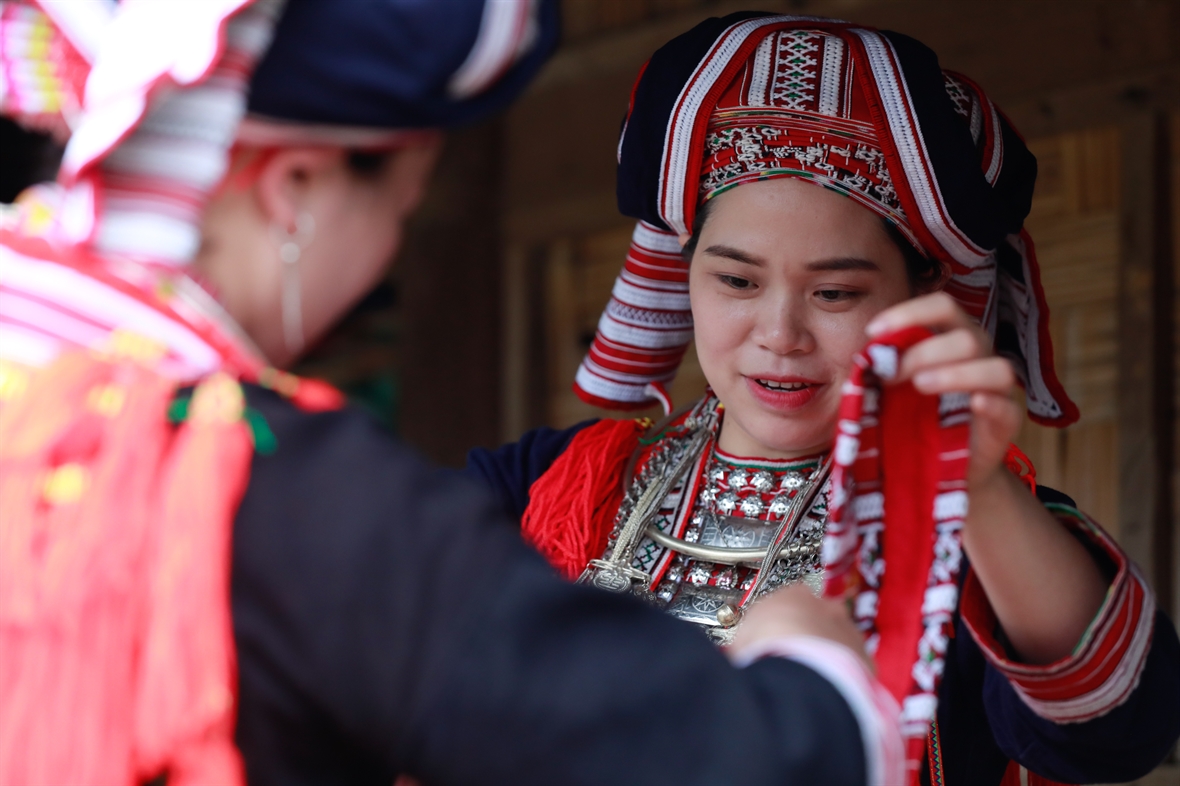 Dao people wear their most beautiful costumes in the Ban Vuong worshipping ceremony. Dao people wear their most beautiful costumes in the Ban Vuong worshipping ceremony. 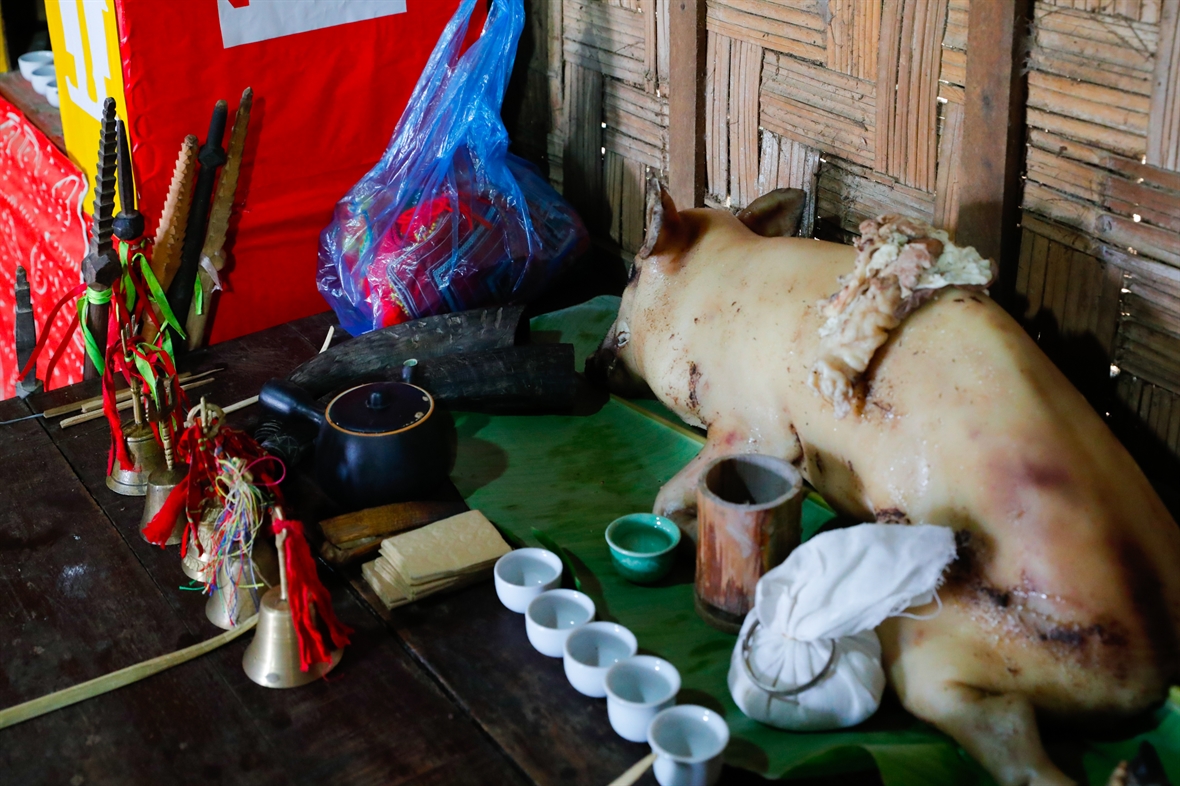 Wine and pork are important offerings to the gods in the Ban Vuong worshiping ceremony. Wine and pork are important offerings to the gods in the Ban Vuong worshiping ceremony. 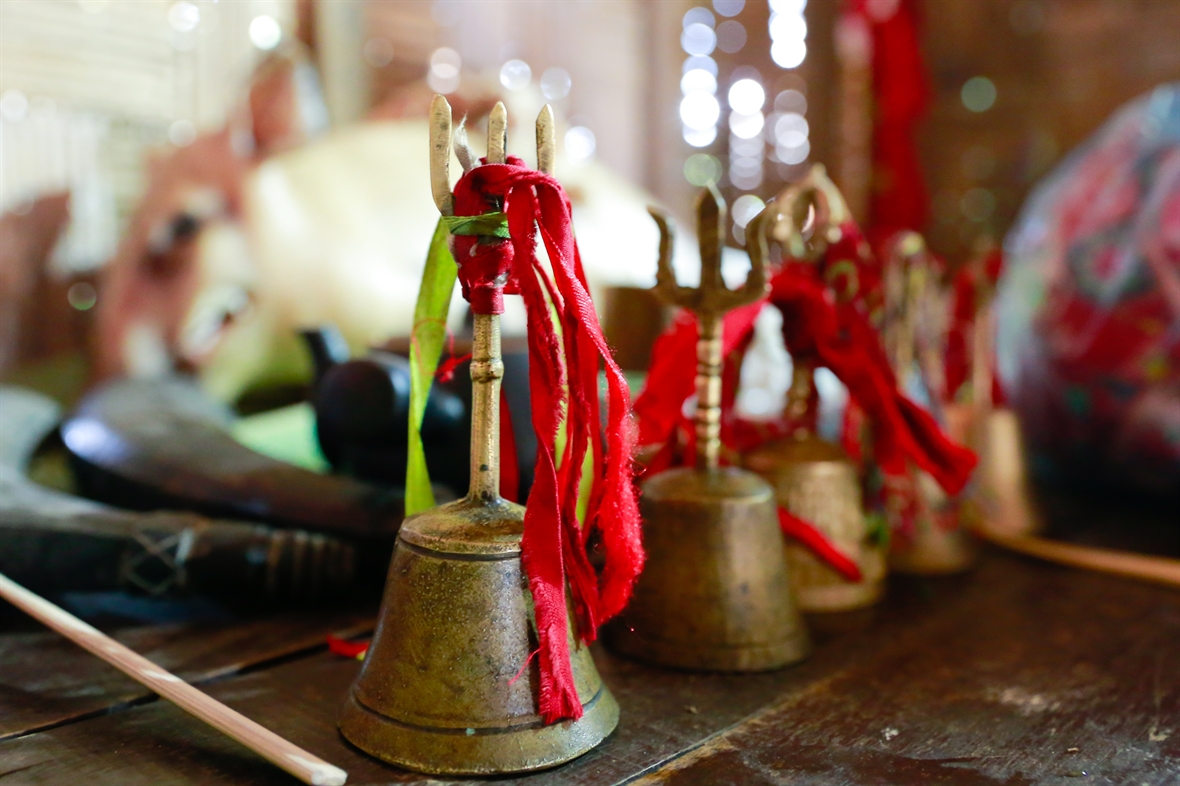
Bronze bells are one of the offerings.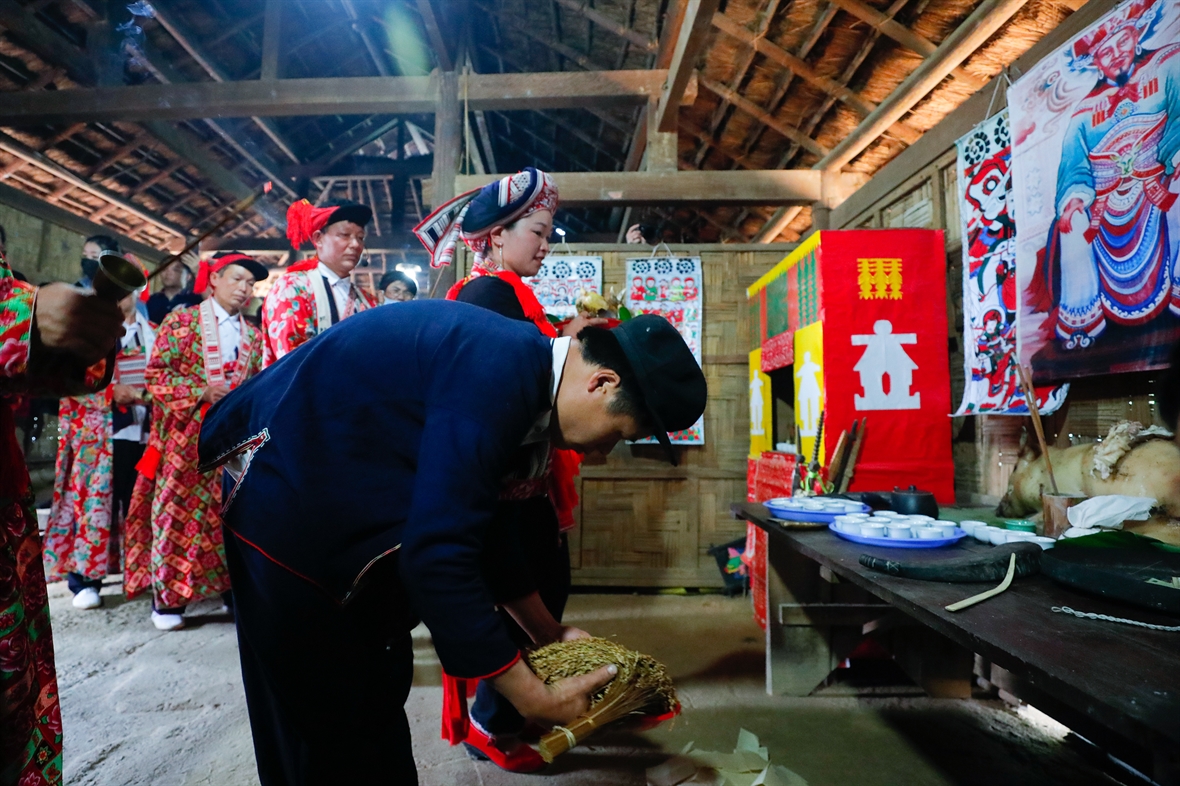 Rice offered to the gods by the homeowner. Rice offered to the gods by the homeowner.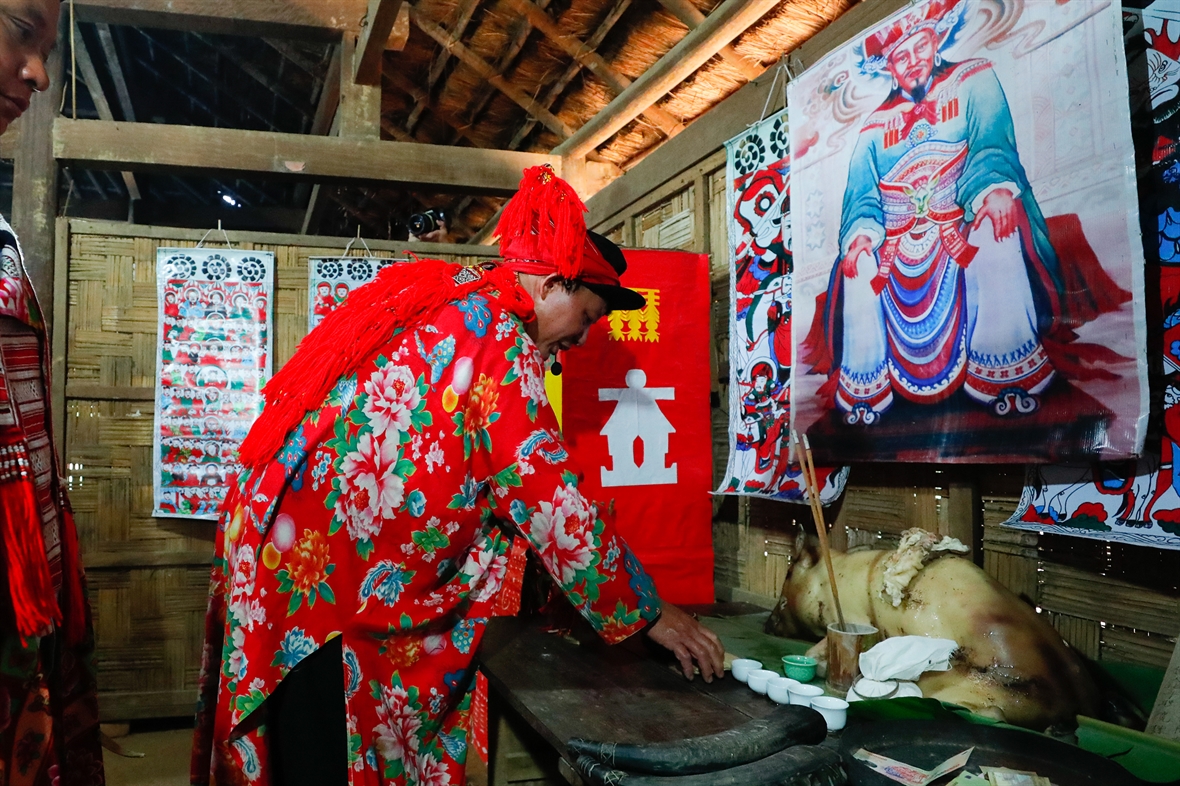 A monk offers wine at the altar of Ban Vuong. A monk offers wine at the altar of Ban Vuong.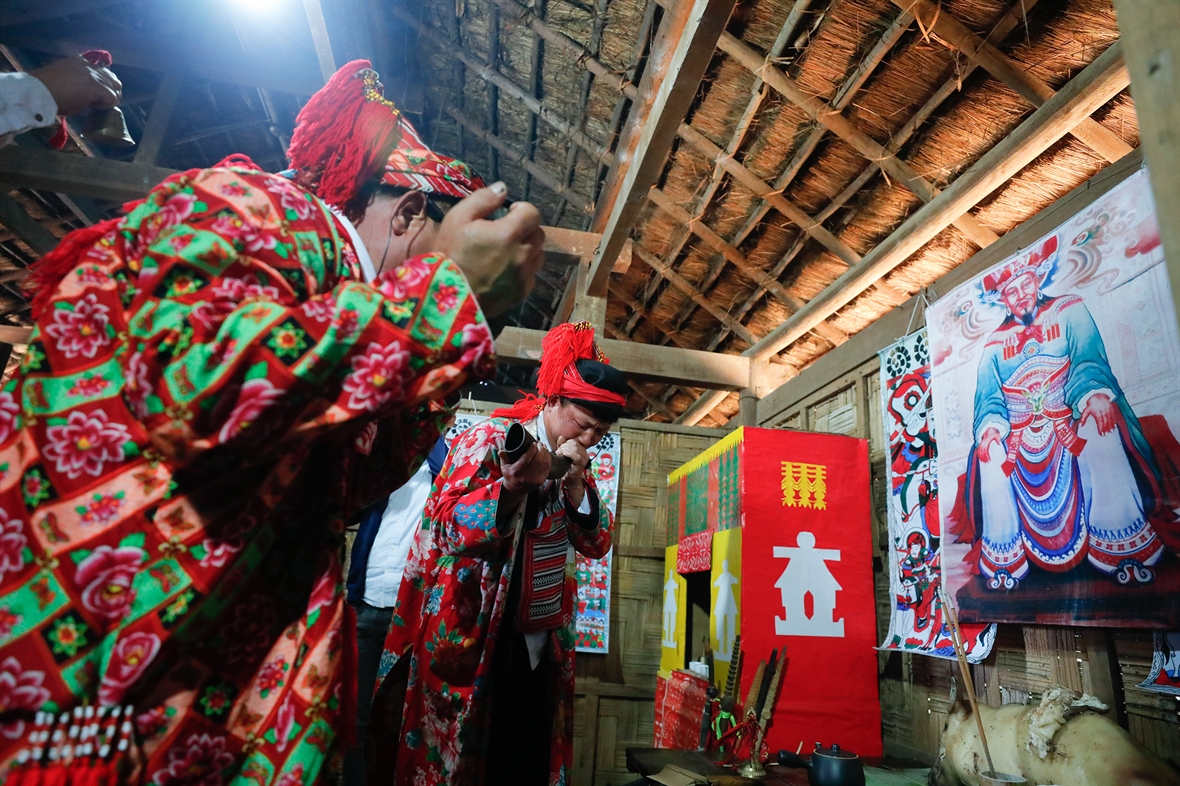 Horn blowing to welcome Ban Vuong, gods and ancestors to attend the worshiping ceremony.Dao monks perform a stick dance between vows. Horn blowing to welcome Ban Vuong, gods and ancestors to attend the worshiping ceremony.Dao monks perform a stick dance between vows.  The shamans in the Ban Vuong worshiping ceremony are highly qualified and know the procedures and rituals. The ceremony ends with a send-off, in which the shamans burn incense papers to send Ban Vuong as well as other ancestors and gods back to their world.The ceremony to send off the gods to heaven is the last part of the Ban Vuong worshiping ceremony. The shamans in the Ban Vuong worshiping ceremony are highly qualified and know the procedures and rituals. The ceremony ends with a send-off, in which the shamans burn incense papers to send Ban Vuong as well as other ancestors and gods back to their world.The ceremony to send off the gods to heaven is the last part of the Ban Vuong worshiping ceremony.The Ban Vuong worshiping ceremony is to express gratitude to the person who gave birth to the Dao
and to pray for favorable rain and wind, so that the harvest will be abundant for their children and grandchildren forever. |
Normally, Ban Vuong is worshiped at Dao’s altars in the home along with the other gods. Important ceremonies of the Dao always have a part dedicated to worshiping Ban Vuong in order to honor their roots. The Dao also organize other community ceremonies to worship Ban Vuong separately. The time of these ceremonies differ among clans and families. There are families who worship once every three years, some every twelve years or twenty years or even longer.
The Ban Vuong worshipping ceremony is to give gratitude to the ancestor of the Dao, and also to pray for favorable weather and an abundant harvest for generations to come. After the offerings are prepared, the ceremony begins with setting up the altar and hanging pictures. The shamans then sanctify ceremony areas with holy water before performing a ritual to invite Ban Vuong and the gods and other ancestors to the ceremony. Next is the welcoming of Ban Vuong. During this segment, in addition to praying for Ban Vuong’s blessing, the shamans also briefly recall the history of Ban Vuong, especially the story of his crossing the sea to find a new homeland and the re-settling in Ha Giang.
The ceremony ends with a send-off, in which the shamans burn incense papers to send Ban Vuong as well as other ancestors and gods back to their world. Through out the ceremony, alternating between speeches and praying, the shamans also blow horns, offer incense and perform sword and bell dances.
A spiritual activity that is imbued with humanity, educating Dao people about their roots, the Ban Vuong worshipping ceremony also unites people to create a strong community.